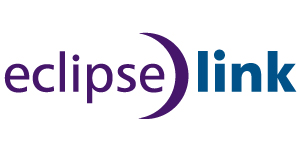Customers today demand an experience that is both contextual and
personalized. They do not want to be forced to follow a
one-size-fits-all process and instead expect processes to adapt to their
needs. This video, hosted by Integration Developer News at Business
Process Management-CON, describes the challenges that rigid or
structured processes present, introduces Adaptive Case Management (ACM)
to address those challenges, and describes how Oracle Business Process
Management Adaptive Case Management empowers knowledge workers to
progress through unstructured and unpredictable processes to meet the
needs of the current situation, or case. Attend the online training here.
Adaptive Case Management Quick Start Series
This series of videos introduces Adaptive Case Management in Oracle Business Process Management 11g. Attend the free on-demand training here.
Overview of Adaptive Case Management
Oracle
Business Process Management 11g Adaptive Case Management enables you to
measure and manage unstructured processes the way you have been
managing your more structured business processes. This video, the first
in the series, describes what Adaptive Case Management is and compares
it to conventional business process management . It also describes the
types of processes that benefit from Adaptive Case Management.
Participating in a Case
Oracle
Business Process Management 11g Adaptive Case Management enables you to
measure and manage unstructured processes the way you have been
managing your more structured business processes. In this video, the
third in the series, you learn what it is like to participate in a case.
Anatomy of a Case Management Project
Oracle
Business Process Management 11g Adaptive Case Management enables you to
measure and manage unstructured processes the way you have been
managing your more structured business processes. This video, the second
in the series, describes the components of a case in Oracle Business
Process Management 11g, demystifying how Oracle Business Process
Management is able to support knowledge workers who participate in
unstructured processes.
Adaptive Case Management series – an overview – part 1 & 2 by Roger Goossens
This
blogpost will be a part of a series, containing the English translation
of 2 Whitebooks originally written in Dutch. Because Whitehorses
believes ACM to become a very important feature in Oracle Fusion
Middleware, it was decided to translate these Whitebooks into a series
of blogposts. Enjoy!
With the arrival of patchset 6 of the Oracle Fusion Middleware (FMW) 11g Release Oracle introduces a new and important feature: Adaptive Case Management (ACM).
ACM makes it easier to implement highly flexible business processes in a
FMW environment. Information on ACM is still scarce. It is expected
that in the next major FMW release ACM will be improved upon and that it
will become as important a member of FMW as Business Process Management
and BPEL.
The centerpiece of ACM is the case itself. The first
series (called ACM – an overview) will focus on the most important
components of a case and it’s lifecycle. The common theme of this
whitebook used to explain ACM, is a fictional case based on the Dutch
law called WABO (to be explained later on). The theme is used in the examples and demos to better explain the concept.
![Case Lifecycle]()
SOA & BPM Partner Community
For
regular information on Oracle SOA Suite become a member in the SOA & BPM Partner Community for registration please visit www.oracle.com/goto/emea/soa (OPN account required) If you need support with your account please contact the Oracle Partner Business Center.
![]() Blog
Blog![]() Twitter
Twitter![]() LinkedIn
LinkedIn![image[7][2][2][2] image[7][2][2][2]]() Facebook
Facebook![clip_image002[8][4][2][2][2] clip_image002[8][4][2][2][2]]() Wiki
Wiki
Technorati Tags:




height: 475px;" src="https://blogs.oracle.com/ArdaEralp/resource/BPM_ListToString/Multi4.png">














![image[7][2][2][2] image[7][2][2][2]](http://soacommunity.files.wordpress.com/2013/04/image7222.png?w=20&h=20&h=20)
![clip_image002[8][4][2][2][2] clip_image002[8][4][2][2][2]](http://soacommunity.files.wordpress.com/2013/04/clip_image00284222.jpg?w=26&h=23&h=23)

 To
create a custom database authenticator for oracle weblogic server, you
will have to implement the AuthenticationProviderV2, create an MBean
definition file and create a class that implements LoginModule.
To
create a custom database authenticator for oracle weblogic server, you
will have to implement the AuthenticationProviderV2, create an MBean
definition file and create a class that implements LoginModule.








 How is Javaland different from all the other Java conferences, in
Germany and the rest of the world?
How is Javaland different from all the other Java conferences, in
Germany and the rest of the world? The second approach is a bit more traditional. If you'll recall,
The second approach is a bit more traditional. If you'll recall, 